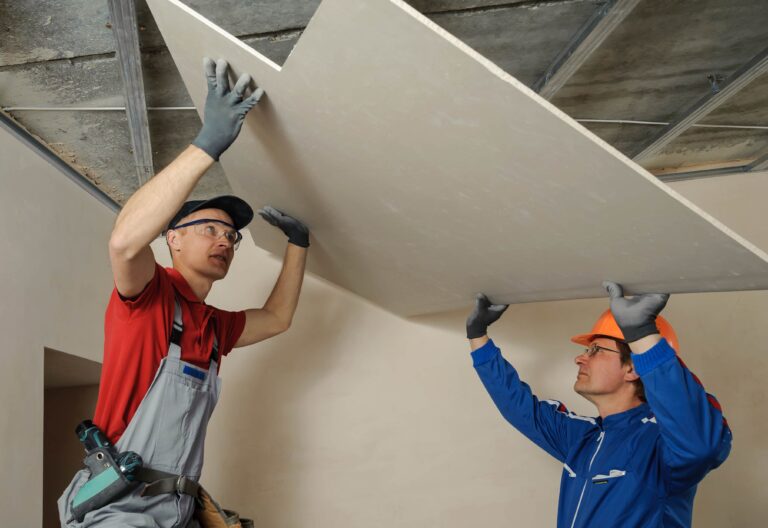Dependable Drywall Installation Solutions for Every Area
Dependable Drywall Installation Solutions for Every Area
Blog Article
Drywall Installation Made Easy: Tips for Perfect Results
Drywall setup is commonly regarded as a difficult job, yet with the ideal strategy and understanding, it can become a workable endeavor. Understanding techniques for reducing, hanging, and ending up drywall can significantly affect the result.
Selecting the Right Products
Picking the appropriate products for drywall installment is crucial to attaining a sturdy and aesthetically pleasing finish. drywall installation. The key part, drywall sheets, normally can be found in numerous thicknesses, with 1/2-inch sheets being typical for interior walls. For locations needing extra wetness resistance, such as kitchen areas or washrooms, consider using eco-friendly board or cement board, which are particularly designed to withstand humidity

Additionally, selecting the ideal bolts-- either screws or nails-- is crucial for securing the drywall to the framing. Drywall screws are normally favored for their holding power and lowered risk of standing out. Consider the finishing touches such as primer and paint, which not only enhance the look but likewise shield the drywall from moisture and wear.
Preparing the Installment Area
Before beginning the drywall installation process, it is vital to prepare the installment location completely. This preparation entails numerous essential steps to guarantee a successful and smooth job. Initially, clear the area of any furniture, devices, or obstructions that can prevent gain access to. A tidy work area minimizes the danger of damage to existing products and permits efficient movement during installment.
Next, inspect the wall surfaces and ceiling for any kind of imperfections, such as cracks, holes, or mold. Address these problems in advance; patch any kind of problems and allow adequate time for repair work to completely dry. Furthermore, ensure that electric outlets, switches, and plumbing are correctly positioned and accounted for, as this will influence drywall positioning.
Take into consideration the ecological problems. A secure temperature level and humidity degree are vital for ideal bond and performance of the drywall products. If essential, make use of a dehumidifier or heating unit to produce suitable conditions.
Cutting and Hanging Drywall
The trick to reliable drywall setup lies in the precise cutting and dangling of the panels. Utilize a straight edge and an energy blade to score the drywall along your measurements, after that break it along the racked up line for a tidy break.

Always work from the top down and entrusted to right, making sure that you maintain a staggered pattern to boost stability. Appropriately hanging the drywall sets the structure for a smooth coating, ultimately causing superior cause your drywall job.
Insulation and Mudding Strategies
While proper cutting and hanging of drywall establishes the stage, the next essential step includes grasping taping and mudding strategies to make certain a seamless surface. Insulation is crucial for reinforcing joints and stopping fractures; it involves installing tape right into the applied joint compound (mud) Begin with a high quality fiberglass or paper tape, applying the tape over the joint and pushing it into the damp mud making use of a taping knife, ensuring no air bubbles continue to be.
When the tape remains in location, use a slim layer of joint compound over the tape, feathering the edges to create a smooth shift to the drywall surface area. Enable this layer to dry totally before sanding it gently to get rid of imperfections. Repeat this process, applying extra coats of mud as needed-- commonly 2 to 3 coats-- while slowly expanding the application location with each layer to attain a seamless look.
After the final coat dries out, sand the surface with a fine-grit sandpaper until smooth. drywall contractor. Bear in mind to use a mask throughout fining sand to stay clear of breathing in dust bits. Mastering these taping and mudding techniques is important for accomplishing a professional-quality coating in your drywall installment
Finishing Touches for Perfection
Achieving a perfect drywall installment exceeds taping and mudding; it culminates in the ending up touches that raise the total appearance. These final actions are essential in making sure a professional-grade coating that enhances the visual appeals of your space.
Begin by sanding the dried out joint compound to create a smooth surface area. sheetrock repair fort worth. After sanding, learn the facts here now clean down the walls with a damp cloth to eliminate any type of dust bits, making certain a tidy surface for paint.
Next, apply a primer particularly designed for drywall. This action is crucial, as it aids seal the joint substance and gives an uniform base for the overcoat. Once the guide dries, inspect for any type of flaws, and retouch as needed.
Conclusion
In conclusion, successful drywall setup hinges on the careful choice Click Here of materials, detailed prep work of the installment location, and precise implementation of cutting and hanging techniques. Mastery of taping and mudding processes is important for accomplishing a smooth finish.
Drywall installation is typically viewed as a complicated task, yet with the best strategy and knowledge, it can come to be a manageable venture.Choosing the proper materials for drywall setup is essential to achieving a durable and visually pleasing surface.Prior to beginning the drywall installation procedure, it is essential to prepare the setup location thoroughly. Understanding these taping and mudding methods is essential for achieving like this a professional-quality surface in your drywall setup.
In conclusion, successful drywall installment pivots on the cautious option of materials, complete prep work of the installation location, and specific implementation of cutting and hanging strategies.
Report this page